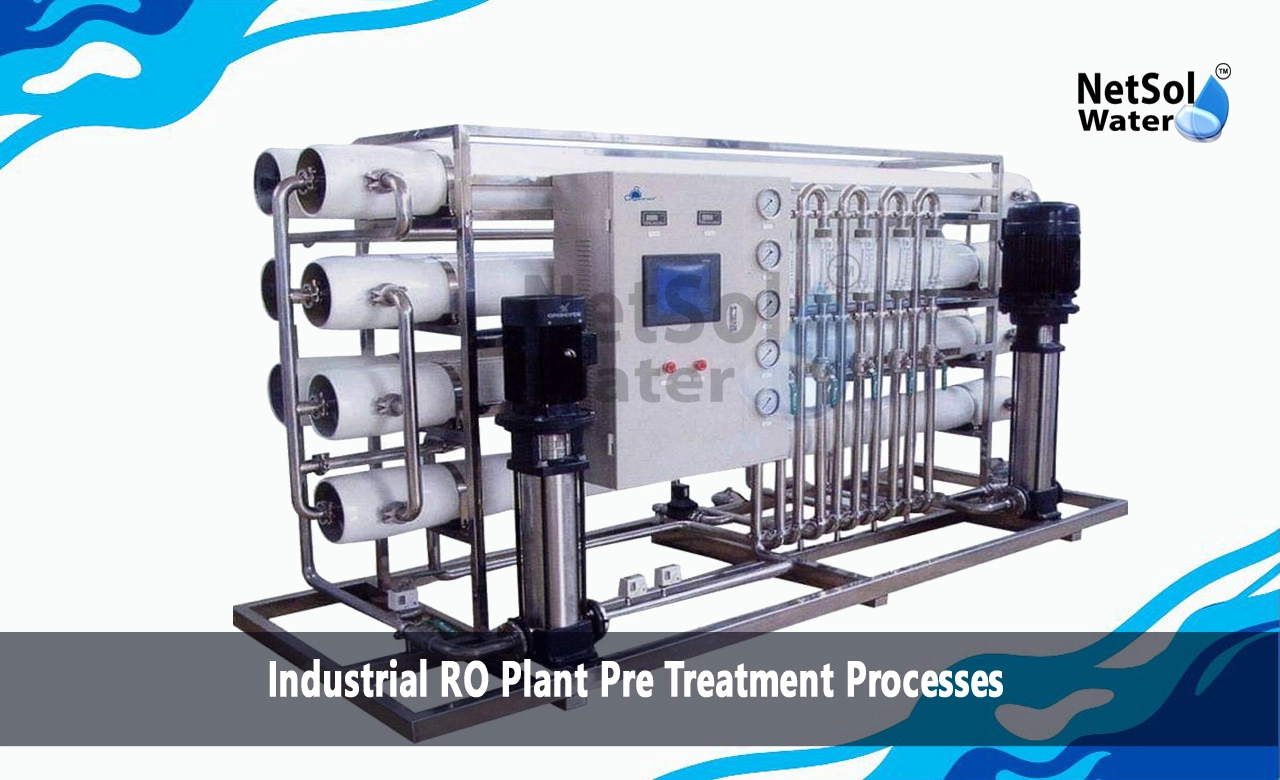What is the Industrial RO Plant Pre-Treatment Processes?
Reverse osmosis has become a widely adopted technology across diverse industries for purifying water supplies and treating wastewater. However, to ensure reliable long-term operation and protect these expensive membrane systems from fouling or scaling, proper pre-treatment of the feed water is absolutely essential.
We will examines the various pre-treatment processes commonly employed upstream of industrial RO plants and their roles in optimising performance.
Why is RO Pre-Treatment Needed?
Even after conventional treatment, factors like high salinity, dissolved organics, microbes and particulates remaining in the feed can severely impact RO membrane performance. Suspended solids rapidly clog the membrane surface, while dissolved ions risk precipitating and scaling on the membranes. Organic matter and microbes foster biofilm growth, while oxidisers like chlorine damage the membranes. Proper pre-treatment removes or conditions these problematic constituents to boost the RO's recovery rates, permeate quality, and membrane longevity, improving the plant's overall efficiency and economics.
Coagulation/Sedimentation/Media Filtration
The primary pre-treatment barrier, multimedia filtration systems remove suspended particles down to 10-20 microns. Coagulants like iron or aluminium salts destabilise colloids and microflocs, enhancing agglomeration. Gentle mixing allows these to settle out in clarifiers before the water passes through multilayer anthracite/sand media filters. For RO feeds with high silt levels, micro- or ultra-filtration membrane pre-filters provide more robust particulate removal down to submicron sizes.
Acid/Antiscalant Dosing
To prevent scaling when concentrating sparingly soluble salts like calcium carbonate or sulfates, acid like sulfuric acid or hydrochloric acid reduces pH and alkalinity. Alternatively, specially formulated antiscalants disperse and distort crystal nuclei to inhibit precipitation. Fed continuouslyfacilitates concentrating brines beyond scaling limits. The choice depends on factors like the RO system recovery rate, membrane salt passage characteristics and the scaling species involved.
Multimedia Filters
These are employed to remove oxidised iron, manganese, and complex organics through adsorption and physical entrapment. The conventional design involves layered beds of graded anthracite coal, sand and gravel acting as a depth filter. Processed flow is periodically reversed, and the bed is agitated to purge the captured contaminants. Greensand filters offer targeted removal of iron and manganese using potassium permanganate regeneration.
Activated Carbon Filters
Granular activated carbon (GAC) filters facilitate the removal of residual dissolved organics, including humic substances that foul RO membranes. They adsorb lower-molecular weight organics and partially oxidise higher compounds through biological activity in the filter bed. Pre-treatment with ozone or chlorine oxidises large organic molecules, making them more adsorbable. The carbon requires periodic reactivation or replacement when exhausted.
Cartridge Filtration
For low-solids RO feeds, replaceable cartridge filters with small pore sizes like 5 microns provide efficient final particle removal before membrane modules. They protect against shedding from upstream processes and any debris entering the RO system piping. Redundant filters allow continuous operation with staggered change-outs.
Disinfection
To control biofouling, oxidising agents like chlorine or chlorine dioxide gas may be dosed ahead of the RO system. Non-oxidizing microbial control methods include ultraviolet irradiation and membrane filtration for low-solids streams. Strict monitoring ensures complete residual removal before the RO using chemicals like sodium bisulfite or activated carbon to prevent membrane damage.
Conclusion
A properly designed pre-treatment system customised for the specific feed water characteristics is vital for optimising industrial RO plant performance. It safeguards membranes from common foulants and scalants, maximising water recoveries and extending membrane lifespan. Integrating multiple treatment barriers in an appropriate sequence ensures consistent and cost-effective RO plant operation over the long run. Pre-treatment is a critical investment protecting the larger capital expenditure on the RO process itself.
To explore customised commercial RO plants, Industrial RO plants, ETP or STP solutions for your needs in your areas and nearby regions, contact Netsol Water at:
Phone: +91-965-060-8473, Email: enquiry@netsolwater.com



